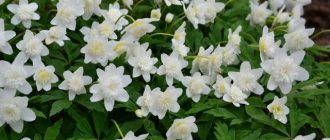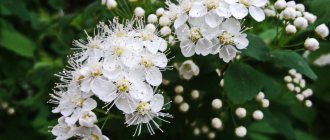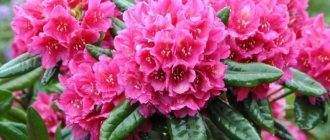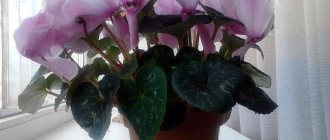Japanese anemone is a representative of perennial plants belonging to the genus Anemone, the Ranunculaceae family. The plants are garden plants and grow mainly in areas with moderate climatic weather conditions. A distinctive feature of the culture is a fairly high level of frost resistance, as a result of which flowers can be grown, if necessary, even in those areas where severe winters are observed. Despite this, the flowers are quite fragile and have an attractive appearance. Today, there are a large number of varieties of Japanese Anemone. In order for flowers to delight you with their appearance, you need to know how to plant and care for plants.
Description of Japanese anemone
Japanese anemone is a rather delicate crop belonging to the Ranunculaceae family. Today there are more than 100 varieties of culture. Despite this diversity, all existing Anemone species share common characteristics. A distinctive feature in this case is a fairly strong and slender stem, the height of which can reach 1 m. The leaves are of a rich shade; no support is required.
The bud includes from 4 to 20 petals. After the flowering period, you can observe the appearance of fruits that resemble nuts in appearance. It is important to take into account the fact that plants belonging to the Buttercup family are poisonous. That is why, if juice gets on the skin, a burn may occur.
Description of autumn anemone
Anemones that bloom in autumn differ from other varieties in their high growth, up to 1.5 m, and the buds collected in loose umbrellas. Their rhizomes are creeping, the leaves are large, pinnately dissected. The flowers are small, chamomile-like, and in varieties or hybrids they can be semi-double. The color of the petals is all shades of white and pink, the stamens and center are yellow or light green. There are varieties and hybrids of Japanese anemone with crimson and purple flowers.
In any case, you will not see such a riot of colors as in the crowned anemone. But the Japanese anemone has its own charm. She does not immediately attract attention, but it is difficult to take her eyes off her graceful flowers.
Trending Pilaf with chicken and shrimp
There are sources that claim that Japanese and Hubei anemone are the same species. It’s just that over a period of close to a thousand years after the appearance in the Land of the Rising Sun, the flower underwent some changes. Supporters of species separation point out that the Japanese anemone has grayish leaves and does not reach a meter in height. Hubei anemone is distinguished by a dark green bush, 1.5 m tall, its flowers are smaller. In any case, it is difficult for a non-specialist to understand these differences. Look at the photos of species plants, they are really similar.
Japanese anemone
Hubei anemone
Varieties and varieties of Japanese anemone
As mentioned above, culture includes a large number of varieties. Each variety has a number of features, advantages and disadvantages that must be taken into account before making a purchase. Despite this diversity, several varieties remain popular, which many experienced gardeners recommend considering first.
Attention! If necessary, you can see what Japanese Anemone flowers look like in the photo.
Hubei Crispa
Hubei Crispa is an Anemone variety distinguished by the unusual beauty of its foliage. In the summer, corrugated leaves appear, resembling parsley in appearance. The leaves are a rich light green color with a cherry rim around the edge. During the flowering period, pink buds appear, the diameter of which reaches 8 cm.
Wil Wind
If necessary, you can find Japanese Anemone of the Vetrennitsa variety for sale on the market for goods and services. As you know, the name of the variety means “whirlwind”. Often this variety is sold under several names - Vil Wind, Velvind, Vilvind. The culture is capable of growing up to 1 m in height. During the flowering period, semi-double white flowers with golden stamens appear. Flowers are collected together in approximately 10-15 pieces.
Prince Henry
Prince Henry is another variety of Anemone japonica. During the flowering period it bears a large number of semi-double flowers. The buds of the culture are painted in a rich pink hue. Each flower consists of about 10-15 sepals. A distinctive feature is the rather abundant and long flowering period of the plants.
Honorine Jobert
Another variety that is popular today is Japanese Anemone Honorine Jobert. This culture can be found on sale under the name Honorine Jobert. The crop is of medium height, as a result of which it can reach a height of 80 cm. The leaves are quite large and dissected, and have a rich gray-green hue. Honorine Jobert's flowers are simple, snow-white with yellow stamens.
Anemone Lady Julia
Anemone Lady Julia is a new variety of Anemone japonica. During the flowering period, flowers of a rich pink hue appear on the plants, while the buds are semi-double. In the center of the flower there is a yellow core. The flowering period begins at the end of summer and continues until the very end of autumn, flowering is abundant. The bushes are small in size, capable of reaching a maximum height of 60 cm.
Advice! It is best to plant the crop in a place where there is no direct sunlight.
Robustisima
As practice shows, the Robustisima variety is significantly different from previous varieties of flowers. This difference is not surprising. This is primarily due to the fact that Robustisima belongs to the Anemone tomentosa, a distinctive feature of which is the presence of leaves that are pubescent from the lower part. The flowers are simple, deep pink. In appearance they resemble dahlias of the Merry Guys variety. It is impossible to call the bushes miniature, since the height can vary from 1 to 1.2 m, while the buds are small.
Description of the plant
Japanese anemone is a beautiful shrub with three-lobed, jagged leaves and colorful flowers that grow singly or in clumps on smooth stems. Anemones begin to bloom in the second half of summer.
Species crops can grow up to 80 cm, there are hybrids lower - 70 cm, and some higher - 120-135 cm.
The standard leaf color is gray-green; in hybrids, the leaves have a bluish or silver tone.
The plant, which lives in its natural environment, has simple flowers that are arranged in groups on the stem. They are painted in light colors - white or pink. Garden flowers have a wide range of colors and fullness.
Anemone in the garden
How to plant Japanese anemone in the garden
Japanese herbaceous anemone is a plant for open ground, as a result of which the planting process must be treated as carefully as possible. In the first place is the correct selection and preparation of the seat. As practice shows, the culture is unpretentious in care, as a result of which even novice gardeners should not have problems with cultivation and further care.
Site selection and soil preparation
Due to the fact that Japanese Anemone is planted in open ground, it is necessary to take the most responsible approach to choosing a planting site. It is best to choose an area that is protected from strong gusts of wind; an excellent solution would be to plant the crop under tall shrubs or trees with a spreading crown. The culture feels great in partial shade or where direct sunlight does not reach, as a result of which the delicate petals will not be scorched.
Attention! Anemones are able to grow in one place for a long time and do not tolerate the transplantation process.
Planting anemones with tubers
Planting Japanese Anemone with tubers is usually carried out in the spring; if necessary, this procedure can be carried out in the fall. The first step is to dig up the soil and remove weeds along with stones. Many experienced gardeners recommend pre-applying mineral fertilizers, organic matter, and sprinkling the ground with wood ash or lime. When planting in groups, there should be plenty of space between the bushes for free growth.
Advice! Planting depth is 5 cm
Planting anemone seeds
If you plan to plant plants with seeds, it is recommended to first place the planting material in wet sand for a while, which ensures the swelling process. After this, the sand is mixed with peat and planting is carried out. As soon as the first shoots appear, you should start hardening the seedlings. If proper care is provided, the Anemone will bloom in the same year.
Important! Carry out the process of planting Anemones in Japanese autumn.
Soil preparation, timing and rules of planting
Japanese autumn anemone is a capricious flower, so you need to choose the right place for planting. The plant does not tolerate a lack of moisture, and heavy soil, strong drafts and scorching rays of the sun are detrimental to it.
Proper planting is the key to health and lush flowering
The best choice is a spacious, open, slightly shaded area where the sun's rays reach only in the first half of the day. The soil should be loose, light, well-drained and fertile. If it does not meet these parameters, it needs to be dug up, fertilized with peat, humus or ash and loosened. The flower grows poorly on sandy, clay and dense soils.
Growing from seeds
Seeds should be sown for seedlings approximately 4 weeks before the expected arrival of heat and snow melting. These times may vary in each region. To make the seeds swell, they are mixed with moistened sand and left for 3-4 days, constantly monitoring the humidity. The swollen seeds are poured into a small tray with peat and gently mixed. The tray is placed in a cool place and left for germination. As soon as the first shoots appear, the box is taken outside directly into the snow and sprinkled with sawdust. In spring, hardened seedlings are planted in the ground.
Growing from tubers
The selected tubers are placed in a basin and filled with warm water. This procedure will help them awaken to life. The edges of the roots can be trimmed to help them set faster, but this is not necessary. After 4 hours, the prepared material is planted to a depth of 5 cm in prepared pots with sand and peat. The sprouted tubers are transplanted into a flowerbed in depressions with a diameter of 30 cm and a depth of 15 cm, while the soil must be well compacted and watered abundantly. The distance between plants should be at least 0.5 m, since then the bushes grow greatly and they do not have enough space.
Caring for Japanese anemone
As practice shows, a distinctive feature of culture is unpretentiousness in care, and this is undoubtedly true. In order to see the beauty of plants in full force, you will need to provide proper care, namely, irrigate the soil in a timely manner, apply fertilizers at least 3 times during the season, remove weeds, loosen and mulch the soil.
Watering
A distinctive feature of the crop is its minimal watering requirements. In the spring, irrigation should be carried out once every 7 days and only if there has been no precipitation for a long period of time. In hot summers, watering should be more frequent, but in small quantities. It is important to understand that the root system is located in the upper layers, as a result of which moisture loss occurs as quickly as possible; in addition, the roots cannot take moisture from the lower layers.
Important! It is not recommended to loosen the soil in close proximity to Japanese Anemone; it is recommended to mulch the soil.
Top dressing
Often the Japanese Anemone flower grows without fertilizing, as a result of which it is impossible to see the crop in all its glory. It is recommended to apply fertilizer at least 3 times during the season:
- In spring, when the first green leaves begin to appear. In this case, organic is perfect.
- During the formation of the first buds, mineral complex fertilizers are applied.
- In the second half of September, any type of fertilizer that does not contain nitrogen is applied.
This is the only way to see all the beauty of flowers.
Shelter for the winter
In the southern regions, the crop does not need shelter. All that is required is simply to cover the plants with a thin layer of mullein. This approach is more of a precautionary measure and also allows you to avoid applying the first fertilizing.
In regions with harsh climatic conditions, it is recommended to use peat, humus and dry fallen leaves as shelter. In regions where there are harsh winters or little snow, the mulch layer should be much thicker.
Protection from diseases and pests
In order to prevent the occurrence of many types of diseases and pests, it is recommended to provide careful care. Thus, the first step is to remove weeds in a timely manner. In order to slow down the growth of weeds, the soil around the bushes is mulched. In the event that the flowers are still affected by the disease, it is worth purchasing special chemicals and starting the treatment process.
Reproduction of Japanese anemone
Propagating plants is difficult. This is primarily due to the fact that with the vegetative method of propagation, the root system can be easily damaged, as a result of which recovery can continue for 12 months.
After the root system has been divided, it is recommended to carefully treat the sections using charcoal. If necessary, plants can be propagated by layering, which are separated from the side shoots of the mother bush and rooted.
Anemone japonica Pamina
Astilbe japonica
Large-flowered variety with bright pink semi-double flowers with a yellow center. Plant height can reach 70-80 cm.
Usually the bushes bloom at the end of August and bloom throughout September until the first autumn frosts arrive, after which the ground part quickly fades. Unlike other anemones, this species tolerates frosts only down to -29 °C. But it is highly resistant to diseases.
The preferred method of propagation is by dividing the rhizome, which grows quite quickly. If the seed method is chosen, it is important to note that the seeds require a mandatory 6-week stratification. When sown in open ground, seedlings will appear at the end of May. Prefers fertile, loose soil and partial shade.
Anemone japonica Pamina
Combination of Japanese tall anemone with other plants
Before planting Japanese pink Anemone, it is worth taking into account the fact that most varieties are tall. That is why, if there is a desire to do a group planting in combination with other plants, then they must be of the appropriate height.
Great options are:
- ferns;
- medium height shrubs;
- remontant roses;
- conifers of any variety.
Japanese anemone can be used as a border or decoration for a gazebo.
Anemones in landscape design
The wide variety of anemone varieties allows them to be widely used in various landscape design solutions. For example, low-growing crops are used to decorate the space around bushes or trees. Oak or forest species planted in clearings as “undergrowth” look impressive.
Virginia anemone is well suited for decorating ponds and streams.
The Japanese variety is combined with phlox and peonies. And terry and semi-double varieties will decorate any flower bed.
Anemones in landscape design











